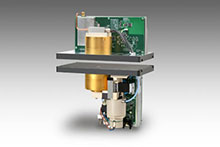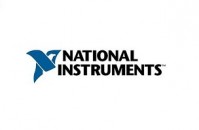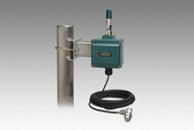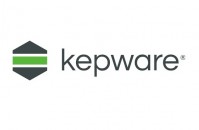 ABB technology is supporting the development of new smart solar power systems for the city of Dubai, United Arab Emirates. Dubai Electric & Water Authority (DEWA) is using the ABB AbilityTM Electrical Distribution Control System to help develop data-driven strategies that maximize year-round solar energy production as part of the Smart Dubai initiative.
ABB technology is supporting the development of new smart solar power systems for the city of Dubai, United Arab Emirates. Dubai Electric & Water Authority (DEWA) is using the ABB AbilityTM Electrical Distribution Control System to help develop data-driven strategies that maximize year-round solar energy production as part of the Smart Dubai initiative.
Smart Dubai is the vision of HH Sheikh Mohammed bin Rashid Al Maktoum, Vice President and Prime Minister of the UAE and Ruler of Dubai. The city is hard-wiring Smart Design into its fast-evolving infrastructure in a series of greenfield initiatives that offer emerging economies a blueprint for sustainable development.
The ABB Ability Electrical Distribution Control System is being employed by DEWA to monitor production at ABB’s Al Quoz photovoltaic solar system. The 312kW installation is the largest privately owned solar rooftop in the region, powering the ABB facility and feeding surplus energy into the grid. ABB’s cloud-based platform makes it easy for DEWA analysts to integrate the power production data with other information, such as weather forecasts and actual rooftop temperatures.
“Dubai has come a long way in its transformation into a smart city under the guidance of HH Sheikh Mohammed bin Rashid Al Maktoum, Vice President and Prime Minister of the UAE and Ruler of Dubai,” said his Excellency Saeed Mohammed Al Tayer, MD & CEO of DEWA. “DEWA works in line with the UAE Vision to achieve smart transformation, and to support the leadership to meet the objectives of the UAE Vision 2021 National Agenda, and Dubai Plan 2021. We seek to promote Dubai as a smart, sustainable, and integrated city with high-tech infrastructure to support social and economic development as well as promote sustainable use of resources by ensuring best practices in consumption, efficiency and governance.”
Dubai aims to generate 25 percent of its energy from renewable sources by 2030 and the development of a viable solar power market is key to this. DEWA is fast-tracking the introduction of digital innovations that will help better manage the city’s energy consumption and production with smart grids and smart meters.
“ABB’s cloud-based platform is enabling a new generation of data-driven strategies for power distribution systems. Data from ABB Ability Electrical Distribution Control System enables DEWA to understand the effect of temperature and other seasonal changes on the yield from solar power systems,” said Loay Dajani, ABB Lead Division Manager - MEA, Electrification Products Division. “The ABB Ability Electrical Distribution Control System is the perfect platform for this kind of collaborative project, producing the data needed for power distribution systems to integrate effectively into smart city concepts.”
Although the UAE enjoys long periods of sunshine each year, the high ambient temperatures can also limit the efficiency of photovoltaic cells. In June, July and August, ambient temperatures in Dubai can reach 50-52°C. In these conditions, roof-mounted solar power systems can reach temperatures of 68°C.
The ABB Ability Electrical Distribution Control System is a cloud-based platform for electrical systems that monitors plant performance, uses data analysis to identify optimization opportunities, and enables the remote implementation of more effective power management strategies. It connects the electrical equipment, using the Emax 2 smart circuit breaker, with cloud-based intelligence and algorithms, removing the need for expensive additional devices and complex programming.
 Yokogawa Electric Corporation announces that it has developed the WG51S2 infrared sensor for the WEBFREX NV online thickness gauge. Positioned as an OpreX™ Quality Control System family solution, the WG51S2 infrared sensor enables the WEBFREX NV online thickness gauge to measure and control the thickness of films and sheets with greater accuracy than ever before. This new product will be released on September 3.
Yokogawa Electric Corporation announces that it has developed the WG51S2 infrared sensor for the WEBFREX NV online thickness gauge. Positioned as an OpreX™ Quality Control System family solution, the WG51S2 infrared sensor enables the WEBFREX NV online thickness gauge to measure and control the thickness of films and sheets with greater accuracy than ever before. This new product will be released on September 3.
 National Instruments, the provider of platform-based systems that enable engineers and scientists to solve the world’s greatest engineering challenges, today announced a sub-6 GHz 5G test reference solution compliant with the 3GPP Release 15 specification for 5G New Radio (NR).
National Instruments, the provider of platform-based systems that enable engineers and scientists to solve the world’s greatest engineering challenges, today announced a sub-6 GHz 5G test reference solution compliant with the 3GPP Release 15 specification for 5G New Radio (NR). A subsidiary of Velan, Velan ABV is a manufacturer of specialized valves, actuators, and control systems. The company employs approximately 120 people and has two manufacturing plants in Lucca, Italy.
A subsidiary of Velan, Velan ABV is a manufacturer of specialized valves, actuators, and control systems. The company employs approximately 120 people and has two manufacturing plants in Lucca, Italy. ABB technology is supporting the development of new smart solar power systems for the city of Dubai, United Arab Emirates. Dubai Electric & Water Authority (DEWA) is using the ABB AbilityTM Electrical Distribution Control System to help develop data-driven strategies that maximize year-round solar energy production as part of the Smart Dubai initiative.
ABB technology is supporting the development of new smart solar power systems for the city of Dubai, United Arab Emirates. Dubai Electric & Water Authority (DEWA) is using the ABB AbilityTM Electrical Distribution Control System to help develop data-driven strategies that maximize year-round solar energy production as part of the Smart Dubai initiative. Yokogawa Electric Corporation announces that it has developed an ISA100 Wireless™*-based field wireless vibration sensor with the ability to quickly update data and a long battery life, and will release it in markets other than Japan on December 7. By providing real-time updates on vibration levels in plant facilities, this sensor helps users quickly detect equipment anomalies and enables predictive maintenance.
Yokogawa Electric Corporation announces that it has developed an ISA100 Wireless™*-based field wireless vibration sensor with the ability to quickly update data and a long battery life, and will release it in markets other than Japan on December 7. By providing real-time updates on vibration levels in plant facilities, this sensor helps users quickly detect equipment anomalies and enables predictive maintenance. Kepware®, a PTC business developing industrial connectivity software, has recently announced the release of the KEPServerEX® version 6.4 industrial connectivity platform. KEPServerEX version 6.4 includes new data collection capabilities, improved data access, and seamless integration with both traditional and industrial Internet of Things (IoT) systems, enabling users to easily manage and monitor their plant floor.
Kepware®, a PTC business developing industrial connectivity software, has recently announced the release of the KEPServerEX® version 6.4 industrial connectivity platform. KEPServerEX version 6.4 includes new data collection capabilities, improved data access, and seamless integration with both traditional and industrial Internet of Things (IoT) systems, enabling users to easily manage and monitor their plant floor. White Paper by Honeywell highlights that there are significant hidden costs in most of the current practices for validating, verifying and documenting that Safety Instrumented Systems and control systems as installed are functioning as designed. One key reason is that until now, there has been no automated mechanisms to support this critical activity. There are no standard ways in the industry to achieve this validation, verification and documentation.
White Paper by Honeywell highlights that there are significant hidden costs in most of the current practices for validating, verifying and documenting that Safety Instrumented Systems and control systems as installed are functioning as designed. One key reason is that until now, there has been no automated mechanisms to support this critical activity. There are no standard ways in the industry to achieve this validation, verification and documentation. Yokogawa Electric Corporation announces that its subsidiary, Yokogawa Electric Korea, has received an order from Doosan Heavy Industries & Construction Co., Ltd., a major South Korean plant construction company, to supply control systems for Doha phase 1 project to build a reverse osmosis* desalination plant in Kuwait. This is Yokogawa's first control system order for a reverse osmosis desalination plant from a South Korean plant construction company.
Yokogawa Electric Corporation announces that its subsidiary, Yokogawa Electric Korea, has received an order from Doosan Heavy Industries & Construction Co., Ltd., a major South Korean plant construction company, to supply control systems for Doha phase 1 project to build a reverse osmosis* desalination plant in Kuwait. This is Yokogawa's first control system order for a reverse osmosis desalination plant from a South Korean plant construction company. Siemens has brought a tablet PC onto the market for the first time. The Simatic ITP1000 industrial tablet PC is currently the fastest tablet PC on the market. It has a projective-capacitive 10.1-inch Multitouch display, the latest Intel Core i5 Skylake processor technology, and the Trusted Platform Module. Designed for industrial use, the Simatic ITP1000 is especially suitable for service, production, measuring and testing, as well as for operator control and monitoring. The new industrial tablet PC supports Windows 7 and Windows 10. With many different interfaces and well-thought-out product features, the Simatic ITP1000 is versatile, can be used everywhere, and can be integrated in both new and existing plant concepts. With long-term availability of components, as with all Simatic PCs, the new Simatic ITP1000 tablet PC can be used for many years.
Siemens has brought a tablet PC onto the market for the first time. The Simatic ITP1000 industrial tablet PC is currently the fastest tablet PC on the market. It has a projective-capacitive 10.1-inch Multitouch display, the latest Intel Core i5 Skylake processor technology, and the Trusted Platform Module. Designed for industrial use, the Simatic ITP1000 is especially suitable for service, production, measuring and testing, as well as for operator control and monitoring. The new industrial tablet PC supports Windows 7 and Windows 10. With many different interfaces and well-thought-out product features, the Simatic ITP1000 is versatile, can be used everywhere, and can be integrated in both new and existing plant concepts. With long-term availability of components, as with all Simatic PCs, the new Simatic ITP1000 tablet PC can be used for many years.